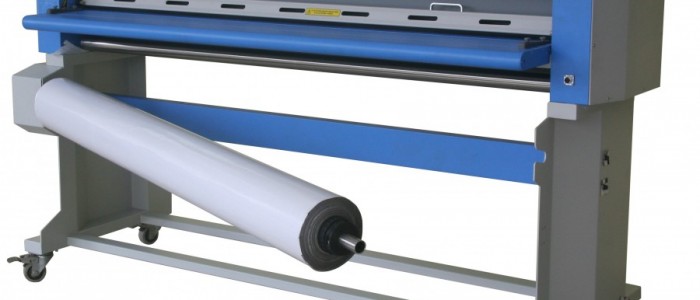Lamination of Large Format Printing
To protect, enhance colors, improve appearance, preserve and extend the life of the image, it’s a requirement of the application, for easy clean up, for graffiti protection, and to allow for personal interaction or add value.
Lamination is the process of applying a clear or semi-clear protective polymer or vinyl coating to a product such as a digital print, poster, photo, banner, etc.
There are two primary methods of laminating used in Wide Format Finishing. Thermal and Pressure Sensitive (Cold)
Thermal Lamination utilizes a laminate that has a thermally activated adhesive on the bottom side of the polymer or vinyl film coating. The polymer/vinyl or finished side of the laminate is passed over a heated surface to activate the thermal adhesive and is then pressed onto the substrate being laminated.
Pressure Sensitive (cold) Lamination utilizes a laminate that has a pressure sensitive (sticky) adhesive applied to the bottom side of the polymer or vinyl film coating. A release liner is also applied to the under-side of the pressure sensitive adhesive to prevent it from sticking to the top side of the laminate while in rolled form. Pressure sensitive film is applied to a substrate using pressure rollers. The release liner protecting the adhesive must be removed just prior to the laminate being applied to the substrate.
Thermal lamination is the most cost-effective method of the two laminating methods discussed. There are applications when thermal laminates cannot be used and the lamination of choice is pressure sensitive. Pressure sensitive films can cost up to three times more than thermal laminates and should be used when thermal laminates cannot be recommended


Comments are closed.